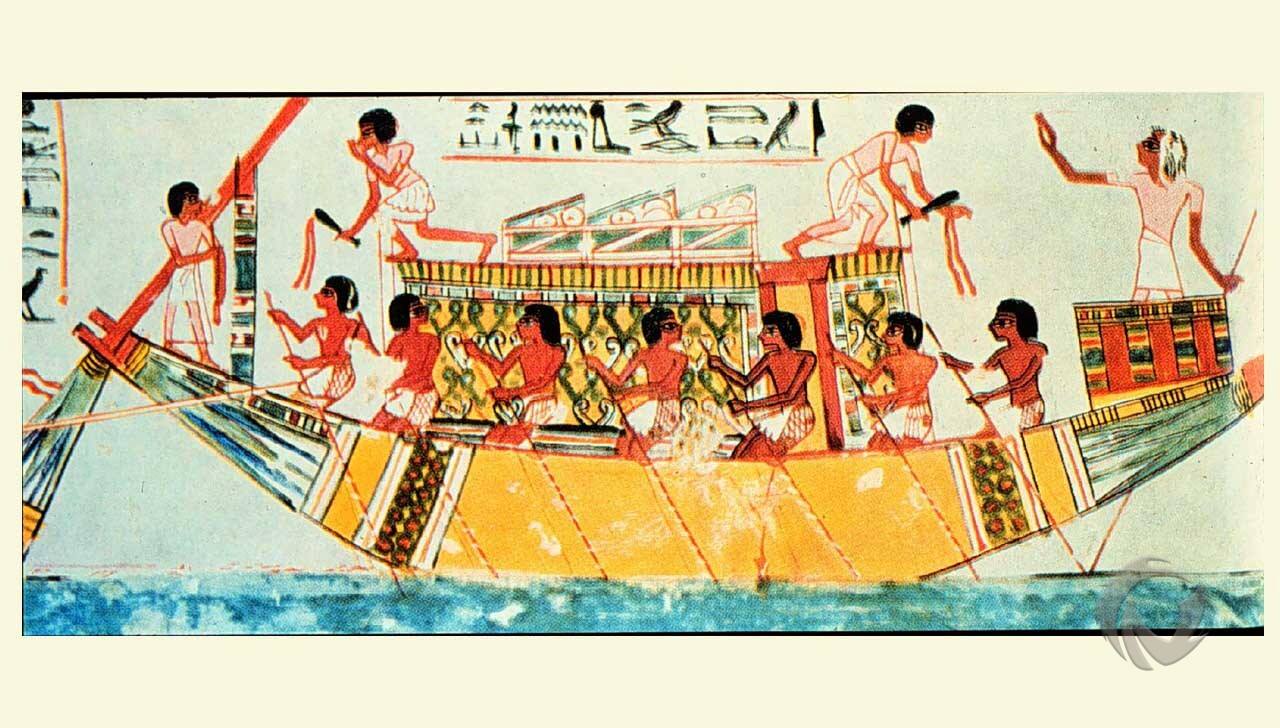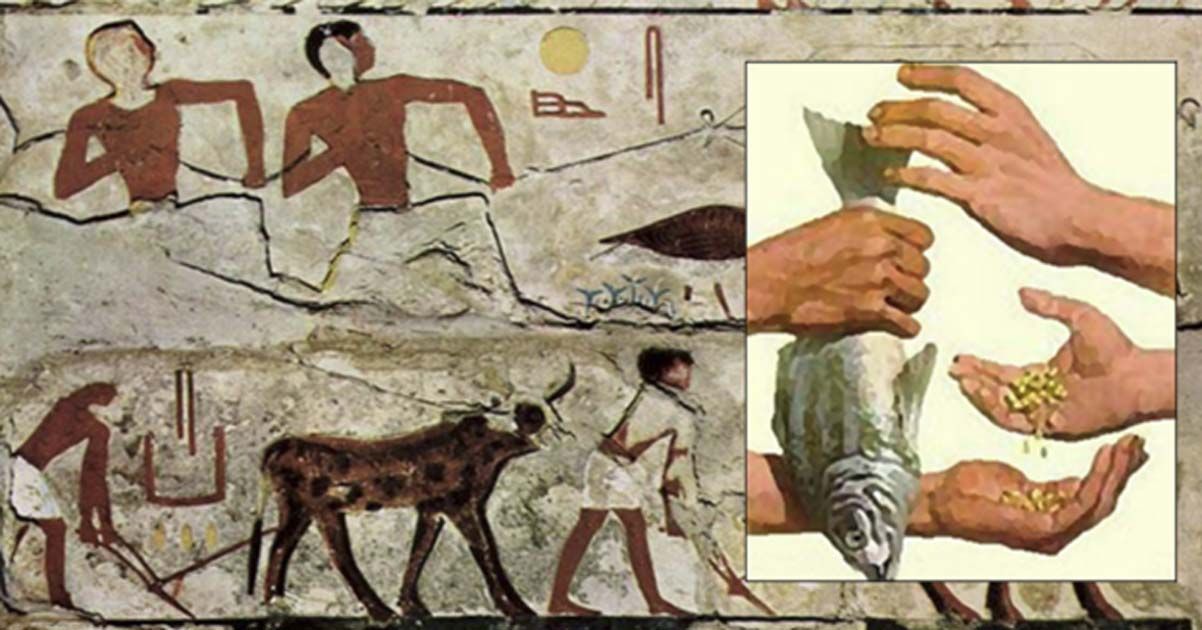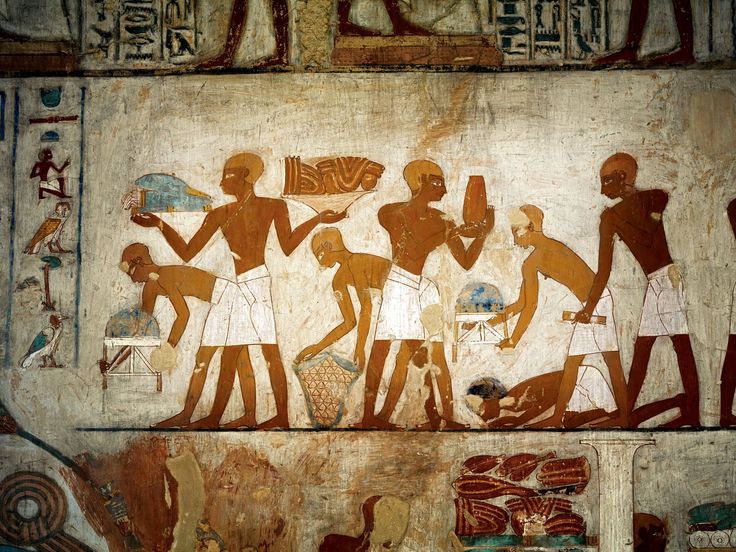Ancient Egypt: A Hub of Trade and Commerce

Trade played a vital role in the growth and prosperity of ancient Egypt, helping the civilization thrive for thousands of years. Ancient Egyptians were master traders, and their strategic location near the Nile River made Egypt a hub for commerce and exchange. This trade network connected them with neighboring regions, giving them access to valuable goods, materials, and resources that were not available locally.
In this article, we’ll explore how trade functioned in ancient Egypt, what goods were commonly exchanged, and how trade routes influenced the economy and culture of this remarkable civilization.
1. The Importance of the Nile River in Egyptian Trade
The Nile River was the backbone of ancient Egyptian trade. This massive river, which flows through the heart of Egypt, served as a transportation route for boats carrying goods from one region to another. The annual flooding of the Nile also provided fertile soil, allowing for surplus agricultural production, which could be traded with other nations.
Boats made of papyrus and wood would travel up and down the Nile, connecting towns and cities and facilitating the exchange of goods within Egypt and beyond. The river made it easy to transport heavy goods like stone, grain, and gold to areas that needed them.
2. What Goods Were Traded in Ancient Egypt?
Ancient Egypt traded both domestically and internationally, importing and exporting a wide variety of goods. Below are some of the most important commodities involved in ancient Egyptian trade:
- Grain: Egypt was known as the “breadbasket” of the ancient world due to its surplus grain production. Grain was a key export, often traded with regions that lacked the fertile lands of the Nile Valley.
- Gold: Egypt was rich in gold, particularly from Nubia, which was highly sought after by neighboring civilizations. Gold was used for trade, luxury items, and even in religious practices.
- Papyrus: Made from the papyrus plant, this material was used to make paper and other goods. Egypt was one of the few places where papyrus grew abundantly, making it a valuable export.
- Linen: Ancient Egyptians produced fine linen from flax, which was used to make clothing, especially for the elite. Linen was traded with other regions, where Egyptian textiles were highly valued.
- Stone and Minerals: Precious stones, limestone, and granite were mined in Egypt and used in the construction of monuments and temples. These materials were also traded with neighboring regions for other goods.
- Wine and Beer: Egyptians were skilled brewers, and wine and beer were popular domestically. Wine, in particular, became an export to other regions in exchange for exotic products.
3. Imports: What Egypt Needed from Other Regions
While Egypt had many natural resources, it also relied on imports for goods that were not available within its borders. These imports helped meet the needs of the population and the ruling elite. Some of the key imports to ancient Egypt included:
- Timber: Egypt had limited forests, so timber was imported from places like Lebanon, where cedar wood was abundant. Cedar was used for shipbuilding, construction, and furniture.
- Spices and Incense: Incense was used in religious ceremonies, and spices were sought after for cooking and medicinal purposes. These were often imported from regions like Arabia and Punt.
- Copper and Bronze: Although Egypt had some access to copper, much of the metal used in their tools and weapons was imported. Bronze, an alloy of copper and tin, was also crucial for the production of weapons and armor.
- Exotic Animals and Ivory: Animals like leopards and baboons, along with ivory, were imported from sub-Saharan Africa and used for religious purposes, decoration, and as status symbols for the elite.
4. Trade Partners and Routes
Ancient Egypt established trade relationships with many neighboring regions, creating a vast network of trade routes that extended across the ancient world. Some of Egypt’s most important trading partners included:
- Nubia: Located to the south of Egypt, Nubia was rich in gold, ivory, and slaves. Trade between Egypt and Nubia was crucial for Egypt’s wealth and military strength.
- Levant: The Levant, which includes modern-day Syria, Lebanon, and Israel, was an important source of timber, precious metals, and luxury goods. The region was one of Egypt’s main trading partners throughout its history.
- Punt: The Land of Punt, thought to be located somewhere in the Horn of Africa, was famous for its incense, myrrh, and exotic animals. Egyptian expeditions to Punt were documented as early as the Old Kingdom.
- Crete and Greece: Egypt also traded with Mediterranean regions such as Crete and Greece, exchanging grain and papyrus for olive oil, wine, and pottery.
- Mesopotamia: Egypt traded with the powerful Mesopotamian civilizations, such as the Babylonians and Assyrians. These exchanges included luxury items like jewelry, fabrics, and metal goods.
5. Trade Practices

Ancient Egyptian trade was primarily conducted through barter, with goods exchanged directly rather than using currency. However, over time, the Egyptians developed a system of weights and measures to standardize the exchange of goods.
Trade was often controlled by the government, which regulated the import and export of goods and collected taxes on trade activities. The pharaoh and his officials played a significant role in promoting trade and establishing diplomatic relationships with foreign powers.
6. Impact of Trade on Egyptian Society
Trade had a significant impact on Egyptian society, from the economy to culture. It provided Egypt with access to essential goods that contributed to the development of its civilization. The wealth generated by trade allowed the pharaohs to fund large-scale construction projects, including the iconic pyramids and temples that still stand today.
Additionally, trade influenced the arts and culture of ancient Egypt. Exposure to foreign goods, ideas, and technologies helped shape Egyptian art, religious practices, and even architecture. Egyptian artisans incorporated foreign influences into their work, and luxury items from other lands became symbols of status among the elite.
Final Thoughts:
Trade was a cornerstone of ancient Egypt’s economic success and cultural richness. By leveraging the natural resources of the Nile River and establishing trade networks with neighboring regions, Egypt gained access to valuable goods that enhanced its society. From grain and papyrus to gold and exotic spices, the exchange of goods not only strengthened Egypt’s economy but also connected it to other civilizations, leaving a lasting legacy on the ancient world.

